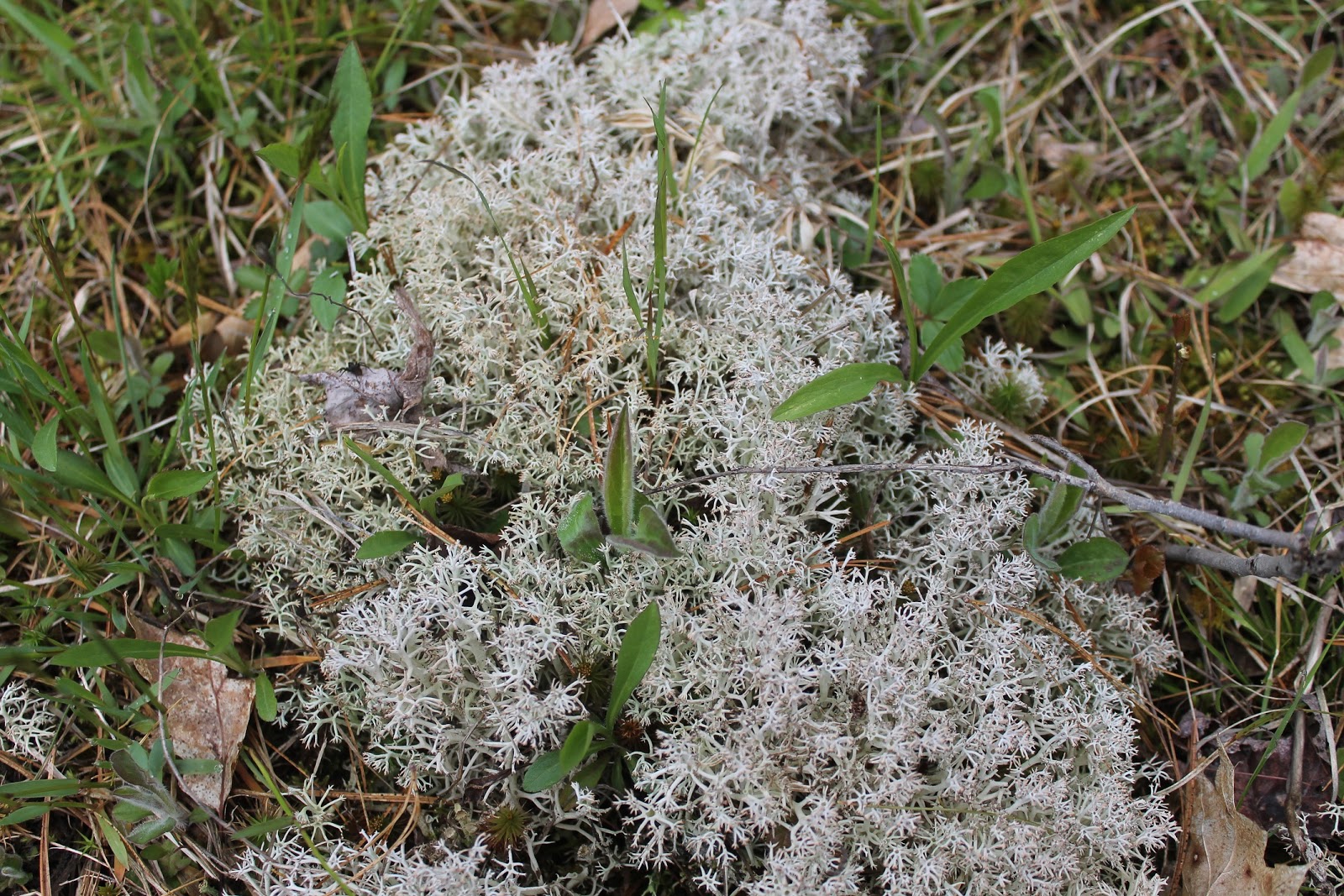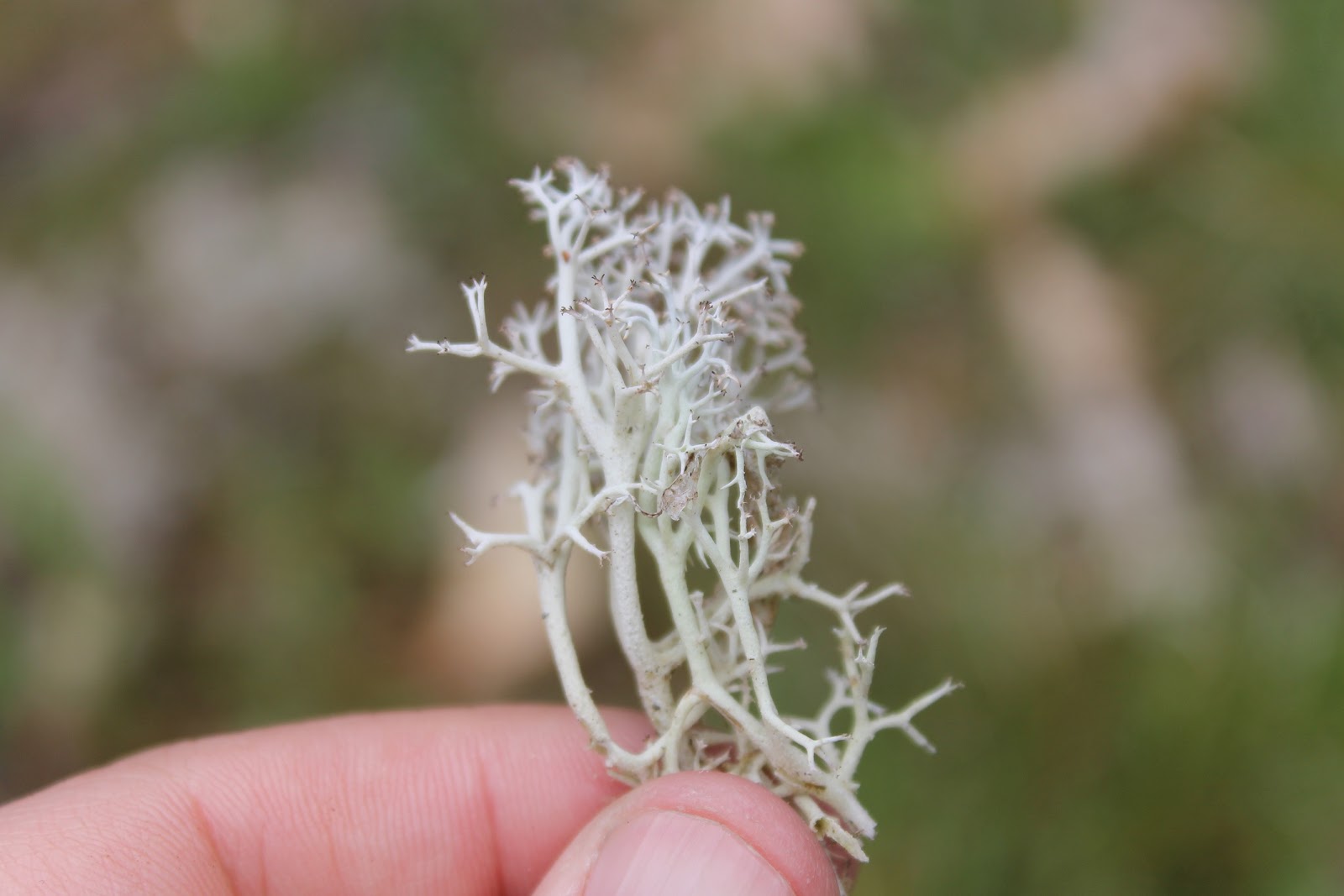
In the Far North of Canada, reindeer moss is an incredibly important food for caribou. It has been estimated that it provides 50% of the nourishment for the hoofed beasts in the summer months and 90 percent in the winter months.
 Even though it is slow growing at just 3 millimeters per year, reindeer moss blankets the tundra and the understory of boreal forests, even after continual consumption by the caribou. It’s a ubiquitous part of the northern landscape.
Even though it is slow growing at just 3 millimeters per year, reindeer moss blankets the tundra and the understory of boreal forests, even after continual consumption by the caribou. It’s a ubiquitous part of the northern landscape.
We are at the southern edge the moss’s range here in Western New York, where it can be found in the higher peaks of the Allegheny Plateau near the Pennsylvania border in Allegany and Cattaraugus Counties. Its greatest abundance – and even then, it’s quite uncommon – is had at elevations in excess of 2,000 feet in this area. That holds to the old naturalists’ adage that an increase in altitude is similar to an increase in latitude; the North is best replicated the higher you go.
Reindeer moss can be found in disturbed sites in those hills, like parking areas, hunting camps, or logged-out forests. It can be identified by its small height (no more than 3 inches), light-grey, almost white, branched appearance, very dry and crunchy feel, and the small clusters that it grows in.
Despite its name, it is not a moss. It is a lichen. Lichens are best described as a symbiotic, composite organism comprised of both algae and fungi. You are likely most familiar with the bluish-green, plate-like lichens that grow on trees and wood.
It has been said that reindeer moss is edible and is a great survival food. It probably is classified as a survival food because you’d have to be in dire straits to eat it: it may be edible in the loosest sense of the word, but I don’t know who’d want to eat.

When sampled raw, it’s incredibly dry, like if you one day decided to munch on Styrofoam or straw. The flavor is moderately repulsive. Due to its heavy acid concentration, it is tart and best compared to the taste of a pill, like aspirin or Tylenol, if you bit into one. I’ve tried it once and never will again. It was that bad.
The Inuit, though, seem to enjoy the flavor when it’s cooked. They first soak it with water, boil it a few times to get rid of the bad taste, crumble it and add it to breads, milk and animal fats. After a few boiling and cooking it is said to have a more earthy, mushroom-like flavor. That seems to be a lot of work just to make something taste just OK.
Beyond that, it serves some medical purposes. Inuit use boiled reindeer moss water to fight diarrhea and kidney stones. Reindeer moss also makes for a good sponge and has been used to dress wounds in the North.
So, the next time you’re hiking the “high peaks” of Western New York and encounter this strange plant (?), fungus (?), admire it as a sort of treasure from the Far North. Just don’t eat. You’ll probably wish that you hadn’t if you did.

